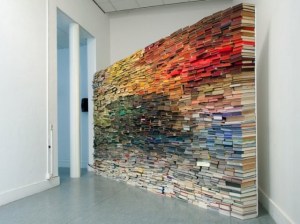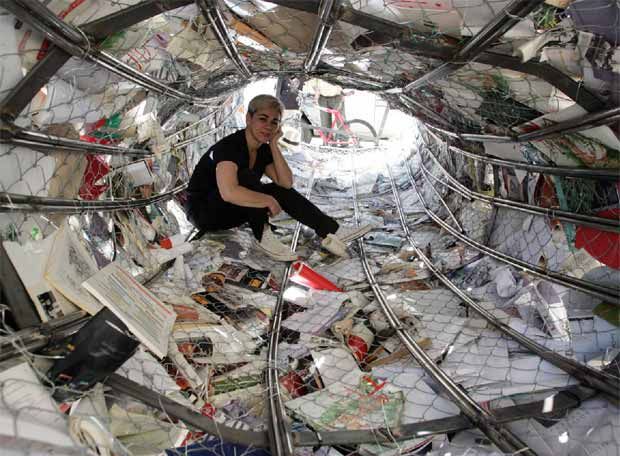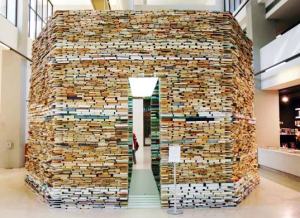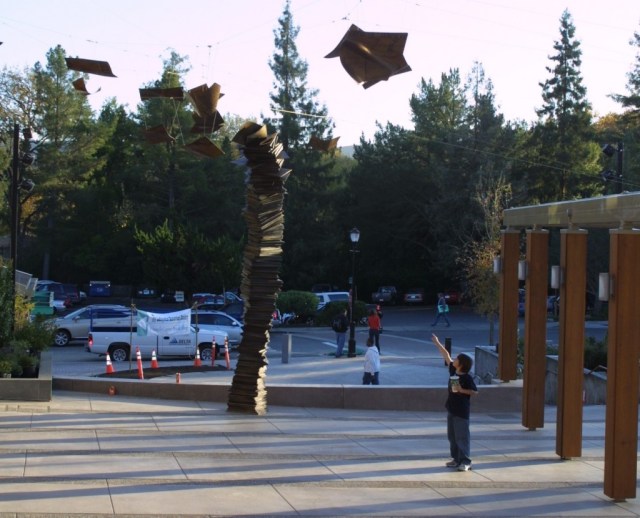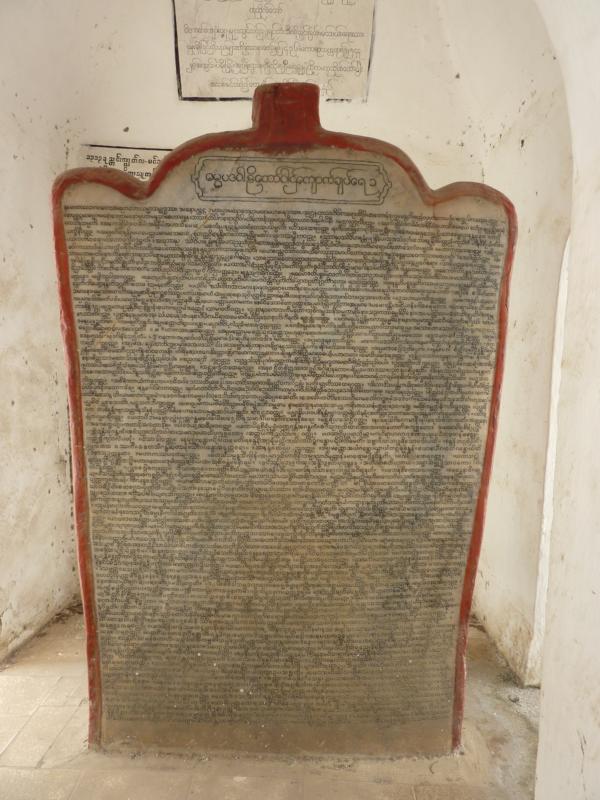Alicia Martín’s series of installations called Biografías has been frequently noted across the Web — Designverb (2009), Crooked Brains (2010), SFCB Blog (2011), Huffington Post (2012), Inhabitat (2012), My Modern Met (2012, 2013), Arte Al Límite (2014), TiraBUZón (2014), El Cultural (2014, 2015) — but Nicola Mariani’s 2013 interview with Alicia Martín is the most useful entrée to this book artist and her work. The most telling insight from the artist elicited by Mariani is this:
Las intervenciones en la calle son de impacto visual, provocan curiosidad, sorpresa y la necesidad de llevársela en el móvil, en el iPad … y compartirla…. Son efímeras, por un tiempo asaltan al que va por la calle sin dejarle indiferente, la escultura “real” es la sensación que ha quedado en cada una de las personas y en la manera de recordarla, pensarla, contarla…. Una vez que se desmontan sólo queda en la memoria del que las ha vivido. Como cuando se lee un libro.
The interventions in the street have a visual impact, provoke curiosity, surprise and the need to capture it on smartphones, on iPads … and share it…. The installations are ephemeral, striking the passers-by in a brief moment allowing no indifference; the “real” sculpture is the feeling that remains in each of them, the way they remember it, think it, tell it…. Once the installations are dismantled, they remain only in the memory of those who have lived them. Like when you read a book
When I came to The Hague in June 2015, too many months passed before I visited Lidy Schoonens, owner of a bookshop devoted to book art, book arts and calligraphy, and one of the founder of the Leiden Book Arts Fair. In her shop on the fourth floor of the early 20th-century house on Johan van Oldenbarneveltlaan, I found myself sitting across from one of the orchestrators of Alicia Martín’s visit to construct her installation for the Paper Biennial 2012 at The Hague’s Meermanno Museum — an experience that put a “real” Martín sculpture in her memory. With her help, I was able to find these images of the installation.

Biografías (2012)
Alicia Martín
Photo: Courtesy of Lidy Schoonens
Biografías (2012)
Alicia Martín
Photos © Ed Jansen 2012.
Lidy described how the community quickly filled large dumpster bins with old books otherwise destined to be thrown away. Martín proceeded to manipulate and attach them to a wire frame, leaving their open pages to flutter and give sound to the cascade. By virtue of its here-today-gone-tomorrow status and its metaphoric metamorphosis of books into a torrent of now barely accessible information, Biografías reminds the viewer of the ephemerality of what appears to be permanent and urges “living” such moments of art to store the sight and sound in memory — or YouTube.
Biographías in Cordobá (2009).
In 2020, the Centro Galego de Arte Contemporánea in Santiago da Compostela has celebrated its Covid-19 reopening with another of Martín’s works — Biblioteca IX (1998) — in an exhibition entitled “Wonder Women: Women Artists in the CGAC Collection”. More of Martín’s work can be found on Mutual Art and in the series of exhibitions listed at Photography-Now.com.
Further Reading
“Large-Scale Book Art Installations (updated)”, Bookmarking Book Art, 27 July 2018.




